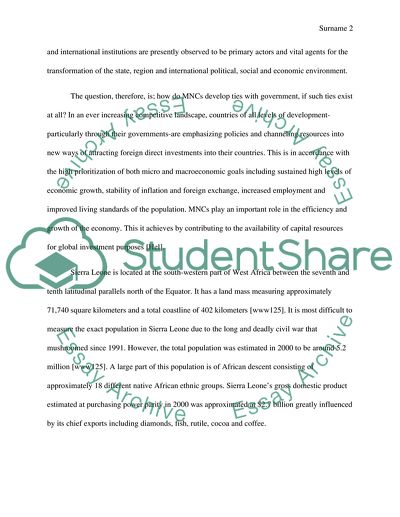Cite this document
(The Role of Multinational Corporations in Conflict in Sierra Leone Research Paper, n.d.)
The Role of Multinational Corporations in Conflict in Sierra Leone Research Paper. Retrieved from https://studentshare.org/politics/1781860-research-design-political-science
The Role of Multinational Corporations in Conflict in Sierra Leone Research Paper. Retrieved from https://studentshare.org/politics/1781860-research-design-political-science
(The Role of Multinational Corporations in Conflict in Sierra Leone Research Paper)
The Role of Multinational Corporations in Conflict in Sierra Leone Research Paper. https://studentshare.org/politics/1781860-research-design-political-science.
The Role of Multinational Corporations in Conflict in Sierra Leone Research Paper. https://studentshare.org/politics/1781860-research-design-political-science.
“The Role of Multinational Corporations in Conflict in Sierra Leone Research Paper”, n.d. https://studentshare.org/politics/1781860-research-design-political-science.


